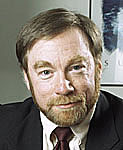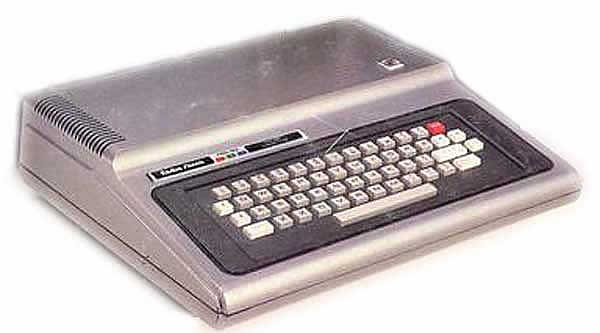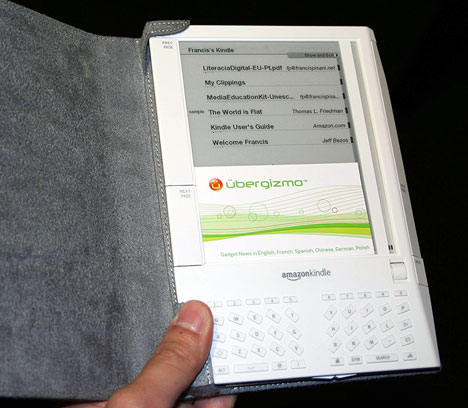
FAIRFAX -- Former Managing Editor/Broadcast at the Associated Press Brad Kalbfeld discussed the changes a traditional wire service reporter faces as technology evolves and creates a convergence of platforms by which to effectively cover the news.
He brought in many traditional props to show the Online Journalism class at George Mason University so they can compare the old and the new.
Kalbfeld started his journalism career in 1973 as a writer, anchor, and eventually a reporter at a local radio station in New York.
In the beginning, as a traditional wire service reporter, two main props Kalbfeld had to carry were:
-A typewriter
-A recorder to get soundbites
Later he was given:
-A trs-80, his first laptop

-A coupler that came with the laptop which transmitted 300 words a minute
Today, these “old” tools are now converged into the IPOD Touch/IPHONE. No longer are the tools fragmented—where one medium is over here and one is over there--but today we are in an integrated, interactive world. A person “can go live from a cell phone anywhere,” said Kalbfeld. They can stream that video live to anyone in the world.
Kalbfeld also discussed how technology is changing rapidly and altering the way journalists do their job. It means that, as a journalist, one must be ready for the changing ground rules in the way people consume news.
Also journalists need to be aware of where advertising is placed, the advertising dollars and the budget. Advertising is moving away from the traditional media toward the interactive media such as the use of Internet and mobile. However, not as much money is showing up in the new media as it was in the old media, resulting in fewer dollars to fund the newsroom.
When a student asked Kalbfeld to clarify on this point, he emphasized, “You have to understand how the public is consuming news and what the public wants in order to produce the kinds of news they want.” By doing this, the newsroom will become more efficient in meeting the expectations of the audience.
Kalbfeld showed the class an Amazon Kindle, an electronic reflective technology, in which no light passes through. It looks and reads like real paper. He gives the example of how a person would be able to take the kindle to the beach and actually read it, whereas it would be difficult to read your IPHONE.

He envisions the future as an industry where many people will have and use this revolutionary technology, in which they can wirelessly connect by Wi-Fi and be able to download any piece of paper they choose---a web page in which it looks like a newspaper and is interactive. It gives the reader the experience of reading a newspaper, but it will be downloadable, up to the minute news.